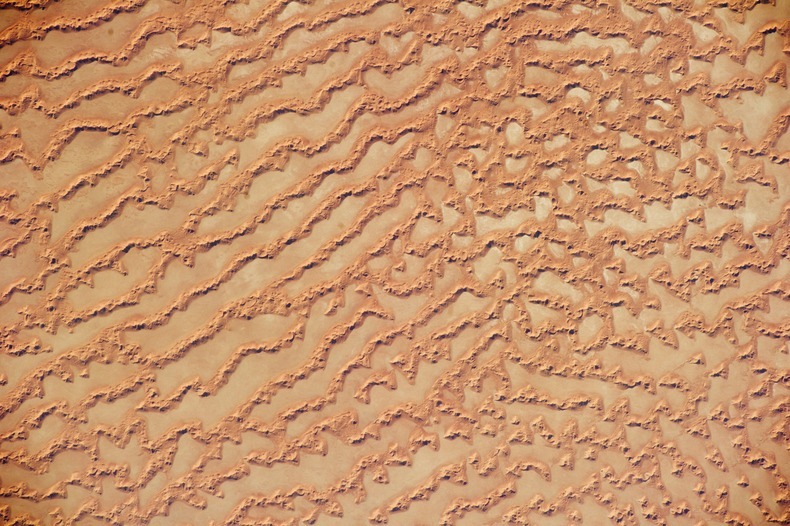It is the largest area of continuous sand in the world.
The desert is 1,000 kilometres long, and about 500 kilometres, and its topography is varied.
Parallel rows of salmon-pink and white alternate to create a rippling pattern.
White salt flats, known as sebkhas or sabkhas, separate the dunes.
This is likely the result of wind pattern interactions and of changes in the sand supply.
Photo credit: NASA
Photo credit
Sources:Wikipedia,Britannica,NASA











